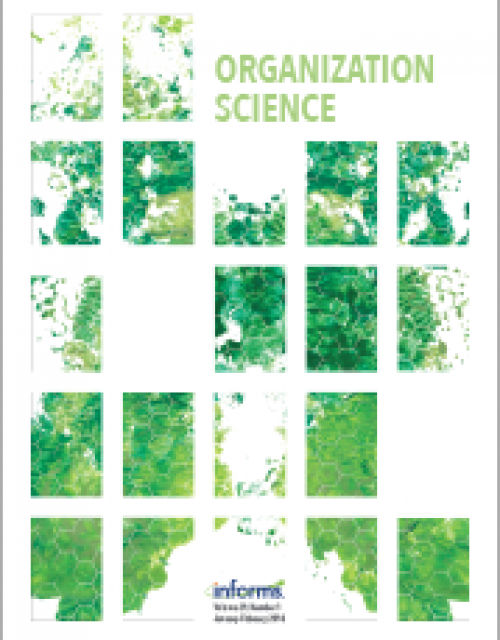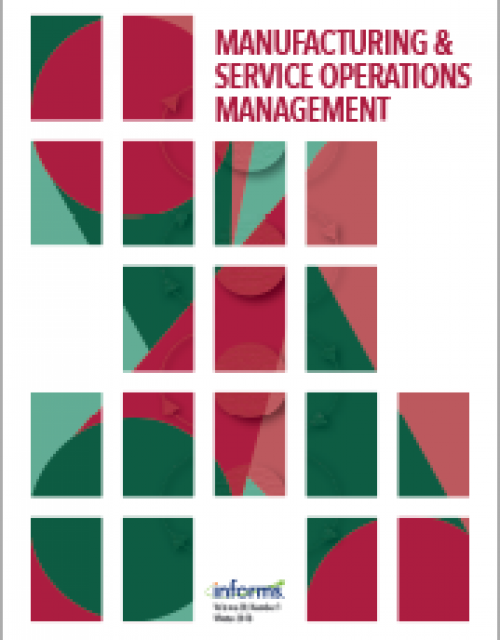Publication records
Subject(s)
Human resources management/organizational behavior
Keyword(s)
structural holes, brokering behaviors, tertius separans, tertius iungens, social networks
Connecting otherwise disconnected individuals and groups - spanning structural holes - can earn social network brokers faster promotions, higher remuneration, and enhanced creativity. Organizations also benefit through improved communication and coordination from these connections between knowledge silos. Neglected in prior research, however, has been theory and evidence concerning the psychological costs to individuals of engaging in brokering activities. We build new theory concerning the extent to which keeping people separated (i.e., tertius separans brokering) relative to bringing people together (i.e., tertius iungens brokering) results in burnout and in abusive behavior toward coworkers. Engagement in tertius separans brokering, relative to tertius iungens brokering, we suggest, burdens people with onerous demands while limiting access to resources necessary to recover. Across three studies, we find that tertius separans leads to abusive behavior of others, mediated by an increased experience of burnout on the part of the broker. First, we conducted a five-month field study of burnout and abusive behavior, with brokering assessed via e-mail exchanges among 1,536 university employees in South America. Second, we examined time-separated data on self-reported brokering behaviors, burnout, and coworker abuse among 242 employees of U.S. organizations. Third, we experimentally investigated the effects of the two types of brokering behaviors on burnout and abusive behavior for 273 employed adults. The results across three studies showed that tertius separans brokering puts the broker at an increased risk of burnout and subsequent abusive behavior toward others in the workplace.
© 2023, INFORMS
Volume
35
Journal Pages
177–194
Subject(s)
Diversity and inclusion; Human resources management/organizational behavior
Keyword(s)
Diversity, equity and inclusion, DEI, global workforce, pandemic, employee well-being, corporate value, women
The pandemic has not wholly derailed DEI as much as feared. The insights from the DEI officers of globally active companies demonstrate optimism and inspiration for those designing DEI strategies in 2022.
ISSN (Print)
0015-6914
Subject(s)
Marketing
Keyword(s)
Luxury, digital, innovation, branding
Traditional luxury goods companies have treated digital as a channel. But they’re now starting to treat it as a marketplace in its own right, thanks largely to Blockchain technology, which has delivered the Non-Fungible Token. Today, the key ingredients of luxury – rarity, exclusivity, and cost — can also apply to virtual products, as companies like Balenciaga, Louis Vuitton, and Gucci have realized.
ISSN (Print)
0017-8012
Subject(s)
Entrepreneurship
Alexander and Lorenzo were at a crossroads with their biotech startup, PhagoMed. They had left high-profile positions at Boston Consulting Group (BCG) three years earlier, driven by a bold vision to tackle the global crisis of antibiotic resistance using phages, viruses with the remarkable ability to target specific bacteria. Despite a robust commitment to R&D yielding deeper insights into phage biology, the journey from lab to clinic was frustratingly slow. And with their capital dwindling, they faced the urgent need to reassess their strategic direction and resource allocation.
NOTE: This case does not have a teaching note and is not available via our distributors. If you are interested in this case, please contact either the author or publications@esmt.org.
Subject(s)
Health and environment; Management sciences, decision sciences and quantitative methods; Product and operations management; Unspecified
Keyword(s)
client engagement, shared service delivery, shared medical appointments, healthcare operations, behavioral operations
Problem Definition: Clients and service providers alike often consider one-on-one service delivery to be ideal, assuming – perhaps unquestioningly – that devoting individualized attention best improves client outcomes. In contrast, in shared service delivery, clients are served in batches and the dynamics of group interaction could lead to increased client engagement – which could improve outcomes. However, the loss of privacy and personal connection might undermine engagement. Practical Relevance: The engagement dynamics in one-on-one and shared delivery models have not been rigorously studied. To the extent that shared delivery may result in comparable or better engagement than one-on-one delivery, service providers in a broad array of contexts may be able to create more value for clients by delivering service in batches. Methodology: We conducted a randomized controlled trial with 1,000 patients who were undergoing glaucoma treatment over a three-year period at a large eye hospital. Using verbatim and behavioral transcripts from over 20,000 minutes of video recorded during our trial, we examine how shared medical appointments (SMAs) – in which patients are served in batches – impact engagement. Results: Patients who experienced SMAs asked 33.33% more questions per minute, made 8.63% more non-question comments per minute, and exhibited higher levels of non-verbal engagement across a wide array of measures (attentiveness, positivity, head wobbling or ‘talai tallattam’ in Tamil – a South Indian gesture to signal agreement or understanding – eye contact and end-of-appointment happiness), relative to patients who attended one-on-one appointments. Managerial Implications: These results shed light on the potential for shared service delivery models to increase client engagement and thus enhance service performance.
© 2023, INFORMS
Volume
26
Journal Pages
154–166
Subject(s)
Economics, politics and business environment; Human resources management/organizational behavior; Management sciences, decision sciences and quantitative methods; Strategy and general management
Keyword(s)
ambidexterity, brokerage, market crises, networks, structural holes
We examine how crisis conditions affect the link between structural holes and organizational performance. Since brokerage offers early access to diverse perspectives and autonomy in exchange relations, the benefits of brokerage should rise when crises erupt. However, evidence on the subject has been inconclusive, raising the question of whether crisis actually imposes a boundary condition on structural hole theory. Using longitudinal data on investment banks, and exploiting the 2000 dot.com crisis as well as the 2008 financial crisis, we explore whether crises moderate the favorable effect of brokerage on performance. Our results reveal that only exclusive, and not shared, structural holes are advantageous for performance, as they facilitate ambidextrous responses to crisis. Implications for brokerage theory and for new research on crisis are discussed.
© 2023 John Wiley & Sons Ltd.
Volume
44
Journal Pages
3122–3154
Subject(s)
Human resources management/organizational behavior
Keyword(s)
error management, psychological safety, automation
Volume
2023
Journal Pages
16–23
Subject(s)
Human resources management/organizational behavior
Keyword(s)
networks, complementarity fit, innovative performance
ISSN (Print)
0017-8012
Subject(s)
Diversity and inclusion; Human resources management/organizational behavior; Management sciences, decision sciences and quantitative methods; Strategy and general management
Keyword(s)
luck, chance models, attribution biases, behavioral strategy, the Carnegie school,
Matthew effect, simulation
Matthew effect, simulation
Volume
14
Journal Pages
1157527
Subject(s)
Finance, accounting and corporate governance
Keyword(s)
accounting quality, inflation, internal information systems, investment
JEL Code(s)
E22, E52, M41
Volume
76
Journal Pages
101632

